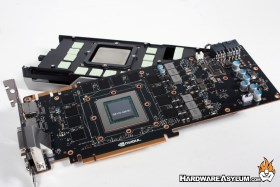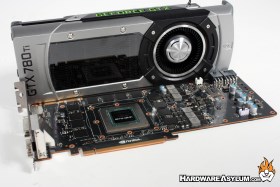NVIDIA GTX 780 Ti Video Card Review
Author: Dennis GarciaConclusion
When NVidia releases a new GPU they do so in two stages. The first stage focuses on the actual hardware from the GPU design down to PCB and cooler. Arguably this is the most important to a hardware enthusiast but it is really only part of the whole picture. The second stage focuses on the software side of things and extends well beyond the driver. Let’s face it, what good is a high-end graphics card if you can’t use it to get the most from your games.
Through the GameWorks initiative, NVIDIA’s developer relations team works with game developers to enhance the way games look, while NVIDIA’s driver team is constantly on the lookout for performance improvements for today’s most popular games and strives to provide game-ready drivers that are optimized for the latest games on the first day of release.
With GeForce Experience, gamers don’t have to deal with the hassle of finding the right combination of graphics settings that is needed to deliver an optimal gameplay experience on their hardware. Simply click one button, and GeForce Experience does all the work for you! GeForce Experience can also be used to keep your graphics driver up to date, and with the recent addition of ShadowPlay, gamers can capture their favorite gaming moments and share them with the world for everyone to see. Finally with SHIELD, NVIDIA’s bridging the worlds of Android and PC gaming all into one device. You can use SHIELD to play your favorite Android and PC games on the big screen, or stream them from the PC to SHIELD’s 720p retinal display.
The hardware can only take you so far and you need good software support to get the most from your games. Another thing to note is that overall performance from NVIDIA and the competition is largely based on two factors, noise control and heat dissipation. As you know GPU Boost 2.0 is a technology designed to provide the best performance while generating the least amount of noise. The technology also rewards you for properly cooling your system by running faster and quieter without any input from the end user.
During our testing the card ran extremely well and posted some impressive benchmark scores. These scores mellowed slightly when it came to came to our gaming benchmarks but in a predictable manner. What really impressed us was the level of overclocking performance we got with very little effort. The ending overclock was a solid 1280Mhz on the core with a memory speed of 1900Mhz. This is over 400Mhz above the factory settings and just happens to be where we stopped our overclocking test. Keep in mind the 1280Mhz core frequency is actually the calculated Boost clock frequency and the prize for an excellent aircooler.
Maybe one of the best parts of GTX 780 Ti is that after the initial launch NVIDIA will open up the GPU and allow board partners to build custom versions of the card. This includes anything from reference cards with custom coolers to a full redesign with larger VRM’s, voltage test points and more powerful coolers. Considering that GTX 780 Ti is likely a pin match to GTX 780 we can expect to see Classified and Lightning editions sometime around CES, if not shortly thereafter.
Bigger Than GTX Titan
Built for Large Displays
Great Looking Stock Heatsink
GPU Boost 2.0
Quiet Operation
GTX Lighting Effects
Great Overclocking 1280Mhz/1900Mhz
A Reason for Watercooling
GPU appears to be CPU bound with certain game titles
4K monitors are still super expensive



